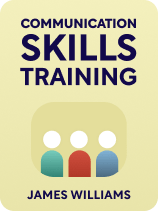

This article is an excerpt from the Shortform book guide to "Communication Skills Training" by James Williams. Shortform has the world's best summaries and analyses of books you should be reading.
Like this article? Sign up for a free trial here.
Does feedback tend to bounce off your walls of defense? Do you shy away from giving feedback to others because of how they might react?
Feedback can be gold. But, regardless of its value, it’s an inescapable part of life. So, it’s wise to learn how to give it, receive it, and respond to it well. In Communication Skills Training, James Williams shares advice on how to make the most of conversations that entail feedback.
Read more to get four recommendations for breaking through defensiveness in order to have a constructive feedback discussion with anyone.
Feedback Discussions
Williams explains that feedback is an important and unavoidable part of everyday communication, making successfully giving and receiving it crucial. However, we often struggle to accept feedback and criticism because it impacts our self-esteem, and our brains reject it to protect us. So, to improve ourselves and help others do the same, we must learn how to give feedback to others without triggering their or our defenses. Here are some tips for taking part in an effective feedback discussion.
(Shortform note: In Thanks for the Feedback, Douglas Stone and Sheila Heen reiterate the importance of mastering feedback conversations—not only because feedback is part of everyday communication, but also because accepting and integrating feedback is how we learn, grow, reach success, maintain relationships, and avoid perpetuating and escalating problems. They explain that people naturally struggle to accept feedback because it causes two of our basic needs to clash. On one hand, we want to learn and grow, and feedback will help us do this. But on the other hand, we yearn to be accepted as we are, and many of us interpret feedback as criticism. As Williams explains, this makes us resist it.)
Tip #1: Give Feedback With Positive Intentions
Before giving feedback, Williams advises making sure you’re doing it to help the other person improve in some way—don’t give it just to make them feel bad or simply criticize them.
(Shortform note: In Carrots and Sticks Don’t Work, Paul Marciano agrees that you should give feedback with the intent of helping the other person succeed. He adds a few additional tips for giving supportive feedback. For example, make your feedback specific and clear so it’s not perceived as complaining. Further, try to provide feedback within 24 hours of the problem occurring—this will prevent resources from being wasted due to the problem and make it less awkward to address.)
Tip #2: Soften Critical Feedback With Praise
Williams suggests softening critical feedback with positive feedback: Start your statement with a compliment, then give your criticism, and then give another compliment to end on a positive note. This technique highlights the other person’s strengths so they’re less likely to focus solely on the criticism and become offended or discouraged. For example, you could say, “The painting you made yesterday was really beautiful, I love how colorful it was. However, I noticed that you left a little mess on the table afterward. Next time, I’d really appreciate it if you could clean up after you finish. I absolutely love that painting though, it brightens up the whole room!” This way, the other person will get your message while feeling uplifted at the same time.
(Shortform note: Some experts argue that this feedback method is ineffective and can damage relationships because it’s based on manipulation—the purpose of giving the compliments is to divert the other person from the key issue (the feedback). Further, many people end up giving disingenuous compliments because they feel they have to say something positive, even if they don’t really feel that way. This damages trust and will make the other person skeptical of future feedback.)
Tip #3: Seek Out Feedback to Get Used to Receiving It
Williams argues that the only way you’ll get good at receiving feedback is through regular exposure to it. As such, you should ask for feedback as often as possible.
(Shortform note: In Thanks for the Feedback, Stone and Heen explain that to effectively ask for feedback that truly benefits you, you need to be specific about which type you’re seeking—otherwise, you may get frustrated and discouraged, setting you back. There are three types of feedback: feedback that lets you know where you stand currently, advice-based feedback that tells you what you can improve on, and feedback that focuses on what you did well.)
Tip #4: After Receiving Feedback, Reflect On and Accept It
Once the other person finishes giving you feedback, Williams recommends taking a moment to fully process what they’ve said before responding. Consider how true their feedback is so you can decide if and how to implement it, and explain how you plan to do so in your response.
(Shortform note: In Thanks for the Feedback, Stone and Heen also recommend taking a moment to process feedback and responding in a way that addresses how you’ll implement the advice. However, they additionally recommend engaging in discourse with the other person. Ask them questions about their feedback to let them know you were listening, clarify your understanding of the feedback, ensure you have all the details, and brainstorm solutions. This will ensure that you implement the feedback effectively.)

———End of Preview———
Like what you just read? Read the rest of the world's best book summary and analysis of James Williams's "Communication Skills Training" at Shortform.
Here's what you'll find in our full Communication Skills Training summary:
- Why effective communication is one of the most important skills to have
- How to develop your communication skills through intentional practice
- Why emotional control is central to expressing yourself effectively






